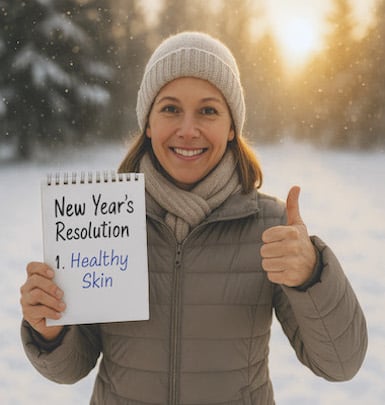BookTrib’s Bites: Four Books That Ask What We’re Willing to Become
(BookTrib) -
-  “The Memory Stone (Dragons of Camelot Book 2)” by Bryan Davis
“The Memory Stone (Dragons of Camelot Book 2)” by Bryan Davis
A girl with powers beyond her understanding. A boy sworn to protect her. And a kingdom veering into madness.
Camelot is becoming increasingly dangerous for dragons and their allies. When a fear-inducing toxin seeps into the water supply, Merlin, Hawk and Sabina suspect sorcery. Could this be Lady Morgan’s doing? But when Lady Morgan pleads innocent and offers a truce to save her poisoned sister, the trio hesitantly believes her. Using a supernatural device called the memory stone, the team splits up to embark on an epic journey to Dragon’s Rest and portals beyond to uncover the mystery.
From Bryan Davis, bestselling author of the Dragons in Our Midst series, comes book two in an epic fantasy adventure set in King Arthur's Camelot. Perfect for middle-grade readers of Christian fiction, this fast-paced novel features an epic battle between good dragons and dragon riders against the forces of evil, told through multiple points of view, including those of the dragons.
Purchase at https://tinyurl.com/thememorystone.
 “Animal Control” by Jonathan R. Miller
“Animal Control” by Jonathan R. Miller
Kirkus Reviews Best Indie Books of 2025 Honoree
Nominated for the Otherwise Award
A young woman inherits a power that begins in the body and echoes out to the edges of the world. It isn’t explained and doesn’t come with rules. It gathers underneath the skin, waiting for direction.
As she begins to understand what the power can touch, rearrange and dismantle, her decisions grow heavier. The results, stranger. Two friends join her, and the movement that forms between them gathers momentum until it starts to shift the balance between what is and what could be. Together they learn that transformation isn’t an event. It is a state. And not every becoming is safe.
In its starred review, Kirkus Reviews calls “Animal Control” “unusually unsettling and unforgettable. A strange, inventive tale that evolves into a challenging and rewarding odyssey.” “Animal Control” is a literary novel of restraint and power, of a young woman who must decide what she is willing to change and what she is willing to become.
Purchase at https://amzn.to/4mtoEHl.
 “Pearl Bound” by Natalie Bergman
“Pearl Bound” by Natalie Bergman
Some women are bound by class. Others refuse to be bound at all.
In the glittering halls of Gilded Age New York, beneath chandeliers and velvet drapes, danger hides in plain sight. “Pearl Bound” is a gothic historical novel steeped in desire, power and the cost of defiance.
Eve Kelly, a young Irish immigrant, arrives at Greythorne, the sprawling estate of the formidable Rennard family, to work alongside her mother. Born into servitude but driven by a restless force she cannot name, Eve is drawn into the orbit of Saskia Rennard — the family’s magnetic, volatile daughter. What begins as forbidden attraction quickly becomes something far more dangerous, entangling Eve in a world where wealth conceals cruelty, gender dictates survival, and intimacy itself becomes a form of rebellion.
As secrets surface and boundaries collapse, “Pearl Bound” reveals how love, ambition and power can turn lethal when society’s rules are broken.
Fans of gothic fiction, sapphic desire and dark historical narratives will find “Pearl Bound” a haunting and unforgettable debut.
Purchase at https://amzn.to/4qFBbJu.
 “Vic’s Views: Opinions Of An Old Codger” by Victor A. J. van Lint
“Vic’s Views: Opinions Of An Old Codger” by Victor A. J. van Lint
In “Vic’s Views,” scientist, engineer and concerned citizen Victor A. J. van Lint offers a clear-eyed, data-driven examination of the forces shaping modern society — and the dangerous consequences of our growing unwillingness to listen to one another. Drawing on a lifetime of learning in research, public policy and global affairs, van Lint explores science, religion, politics, economics, law, environmental risk, war and peace through a unifying lens: how humans make decisions and why extreme thinking so often overrides reason.
Rather than promoting ideology, “Vic’s Views” challenges readers to question assumptions, weigh evidence, and engage opposing perspectives with intellectual honesty and moral restraint. In an era defined by polarization and outrage, this book is a call for civil discourse, principled compromise and informed skepticism — before division hardens into conflict. Most importantly, van Lint invites readers not simply to agree or disagree, but to think more carefully about the future we are creating together.
Purchase at https://tinyurl.com/vicsviews.


 - Emerging sophisticated artificial intelligence (AI) is poised to drive the most profound changes to the world of spy craft since the advent of the internet, according to experts at the Special Competitive Studies Project (SCSP), a nonprofit and nonpartisan initiative with a goal of making recommendations to strengthen America's long-term competitiveness in AI.
- Emerging sophisticated artificial intelligence (AI) is poised to drive the most profound changes to the world of spy craft since the advent of the internet, according to experts at the Special Competitive Studies Project (SCSP), a nonprofit and nonpartisan initiative with a goal of making recommendations to strengthen America's long-term competitiveness in AI.
 - December is here, and Marine Toys for Tots is once again rallying communities nationwide to ensure a magical Christmas morning for children in need. For families facing hardship, the holidays can bring more worry than wonder, but Toys for Tots’ Holiday Campaign offers a chance to change that story. Every donation carries the power to turn a season of struggle into a season of light for disadvantaged children.
- December is here, and Marine Toys for Tots is once again rallying communities nationwide to ensure a magical Christmas morning for children in need. For families facing hardship, the holidays can bring more worry than wonder, but Toys for Tots’ Holiday Campaign offers a chance to change that story. Every donation carries the power to turn a season of struggle into a season of light for disadvantaged children. -
-  As you set New Year’s resolutions, add one that takes just minutes and can make a real difference: protect your skin and get suspicious spots checked. Skin cancer is prevalent, but when caught early, it’s also highly treatable. Here are 10 facts and tips to start the year smarter about prevention and options.
As you set New Year’s resolutions, add one that takes just minutes and can make a real difference: protect your skin and get suspicious spots checked. Skin cancer is prevalent, but when caught early, it’s also highly treatable. Here are 10 facts and tips to start the year smarter about prevention and options. -
-  “Teaching in the Dark” by Genét Simone
“Teaching in the Dark” by Genét Simone “Ni De Aquí, Ni De Allá - But Still Whole” by Dolma Diaz Braynin
“Ni De Aquí, Ni De Allá - But Still Whole” by Dolma Diaz Braynin “Ten Thousand Central Parks: A Climate-Change Parable” by David Brown Morris
“Ten Thousand Central Parks: A Climate-Change Parable” by David Brown Morris “Charlie Minto's Pyramid Scheme” by Les Carroll
“Charlie Minto's Pyramid Scheme” by Les Carroll
 - Across the United States, the caregiving landscape is shifting rapidly. Every day, millions of people are balancing their careers alongside the responsibility of caring for loved ones—a reality that can bring both fulfillment and significant challenges.
- Across the United States, the caregiving landscape is shifting rapidly. Every day, millions of people are balancing their careers alongside the responsibility of caring for loved ones—a reality that can bring both fulfillment and significant challenges.  -
-  “Unshrink Yourself: 12 Mini-Shifts to Ditch Self-Doubt and Own Your Life” by Thanh Nguyen
“Unshrink Yourself: 12 Mini-Shifts to Ditch Self-Doubt and Own Your Life” by Thanh Nguyen “Reflections on Life’s Illusions: A Memoir of Culture and Consciousness” by Jane Gallagher
“Reflections on Life’s Illusions: A Memoir of Culture and Consciousness” by Jane Gallagher “Gunbarrel Highway” by Sean Bridges
“Gunbarrel Highway” by Sean Bridges “The BEST Christmas Pun & Dad Joke Book” by L. Newkirk
“The BEST Christmas Pun & Dad Joke Book” by L. Newkirk
 - The United States and India sit front and center in the global emerging technology competition, and a recent meeting have sparked promising collaboration.
- The United States and India sit front and center in the global emerging technology competition, and a recent meeting have sparked promising collaboration. -
-  “The Great Dick and the Dysfunctional Demon” by Barry Maher
“The Great Dick and the Dysfunctional Demon” by Barry Maher “The Book of Reservations” by Laura Buchwald
“The Book of Reservations” by Laura Buchwald “The Black Dagger Brotherhood: 20th Anniversary Insider’s Guide” by J.R. Ward
“The Black Dagger Brotherhood: 20th Anniversary Insider’s Guide” by J.R. Ward “Joyful Resilience” by Agazit Negash
“Joyful Resilience” by Agazit Negash - Want to get a little wild this winter? The Dallas Safari Club’s upcoming convention in Atlanta, Georgia has something for everyone to help take a bite out of the midwinter blahs.
- Want to get a little wild this winter? The Dallas Safari Club’s upcoming convention in Atlanta, Georgia has something for everyone to help take a bite out of the midwinter blahs.


